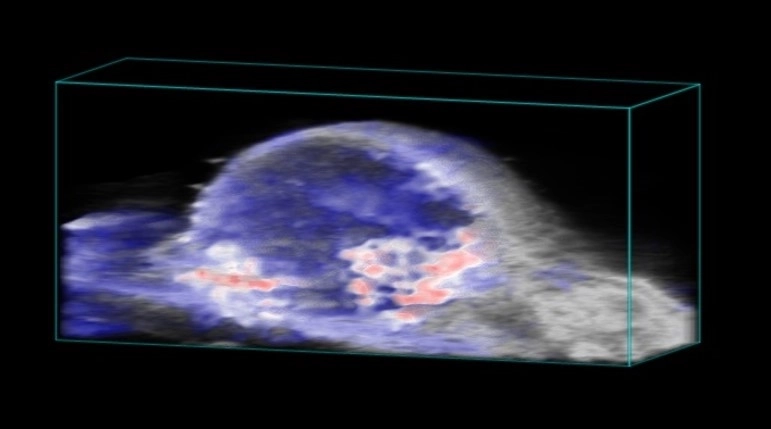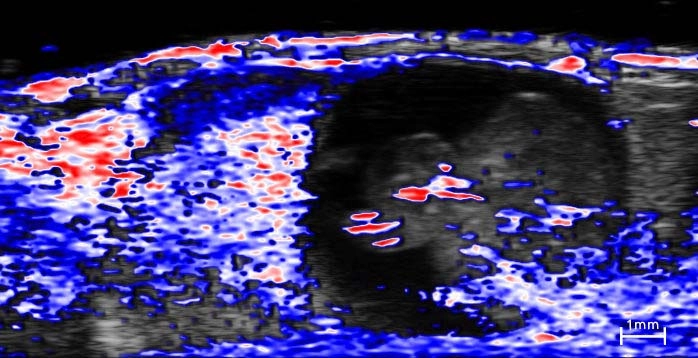For Real-time Monitoring of Functional Processes
Take advantage of having oximetry data fused with high resolution anatomical images.
Seeing Hypoxia: High-resolution, in vivo oximetry
While methods exist for measuring blood oxygenation, they can be invasive, low temporal and/or spatial resolution, superficial or expensive. Because oxy- and deoxyhemoglobin absorb light differently at different wavelengths, photoacoustic imaging can be used to generate a high resolution parametric map of the oxygen saturation of blood completely non-invasively.
This allows for the real-time monitoring of functional processes with the added advantage of having this oximetry data fused with high resolution anatomical images.
Oxy-Hemo mode can be used for:
- Hypoxia assessment within the tumor microenvironment
- Ischemia measurement in stroke and myocardial infarction
- Longitudinal assessment of angiogenesis
- Hemodynamic response to therapy
- Studies of placental oxygenation
PA EKV stands for Photoacoustic ECG-gated Kilohertz Visualization. This unique software allows for photoacoustic imaging with increased temporal resolution and is ideal for cardiovascular applications. Learn more.
Examples of Oxy-Hemo Mode

Subcutaneous tumor showing spatial distribution of oxy and deoxyhemoglobin for hypoxia assessment.

E14 embryo (right) and associated placenta (left) showing oxygenation distribution.